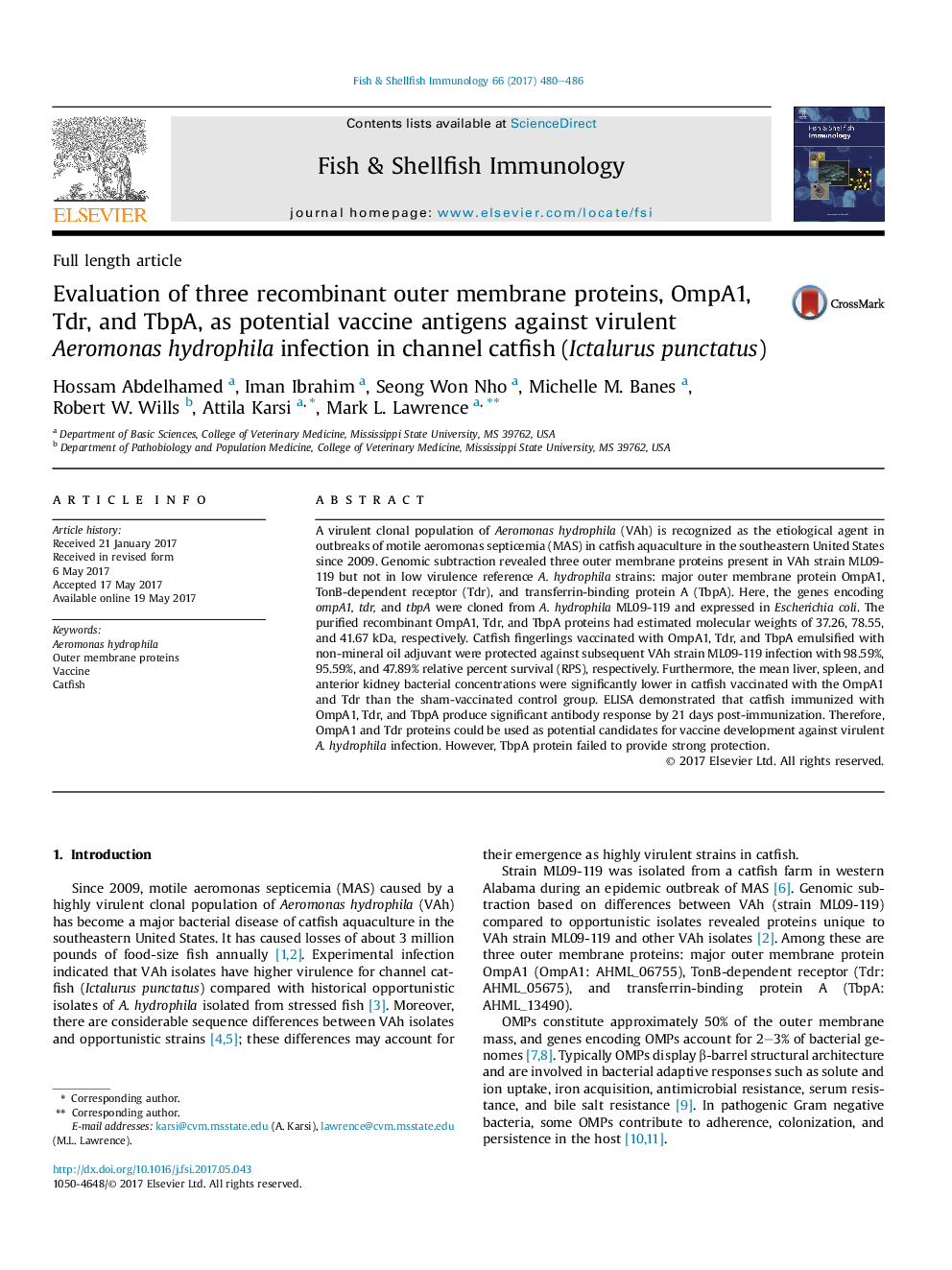| Article ID | Journal | Published Year | Pages | File Type |
|---|---|---|---|---|
| 5540748 | Fish & Shellfish Immunology | 2017 | 7 Pages |
â¢Since 2009, virulent Aeromonas hydrophila (VAh) has been causing an epizootic in catfish aquaculture in the U.S.â¢Outer membrane proteins OmpA1, Tdr, and TbpA unique to VAh were expressed and tested as vaccine antigens in catfish.â¢OmpA1 and Tdr provided significant protection in catfish experimentally infected with VAh.
A virulent clonal population of Aeromonas hydrophila (VAh) is recognized as the etiological agent in outbreaks of motile aeromonas septicemia (MAS) in catfish aquaculture in the southeastern United States since 2009. Genomic subtraction revealed three outer membrane proteins present in VAh strain ML09-119 but not in low virulence reference A. hydrophila strains: major outer membrane protein OmpA1, TonB-dependent receptor (Tdr), and transferrin-binding protein A (TbpA). Here, the genes encoding ompA1, tdr, and tbpA were cloned from A. hydrophila ML09-119 and expressed in Escherichia coli. The purified recombinant OmpA1, Tdr, and TbpA proteins had estimated molecular weights of 37.26, 78.55, and 41.67 kDa, respectively. Catfish fingerlings vaccinated with OmpA1, Tdr, and TbpA emulsified with non-mineral oil adjuvant were protected against subsequent VAh strain ML09-119 infection with 98.59%, 95.59%, and 47.89% relative percent survival (RPS), respectively. Furthermore, the mean liver, spleen, and anterior kidney bacterial concentrations were significantly lower in catfish vaccinated with the OmpA1 and Tdr than the sham-vaccinated control group. ELISA demonstrated that catfish immunized with OmpA1, Tdr, and TbpA produce significant antibody response by 21 days post-immunization. Therefore, OmpA1 and Tdr proteins could be used as potential candidates for vaccine development against virulent A. hydrophila infection. However, TbpA protein failed to provide strong protection.
